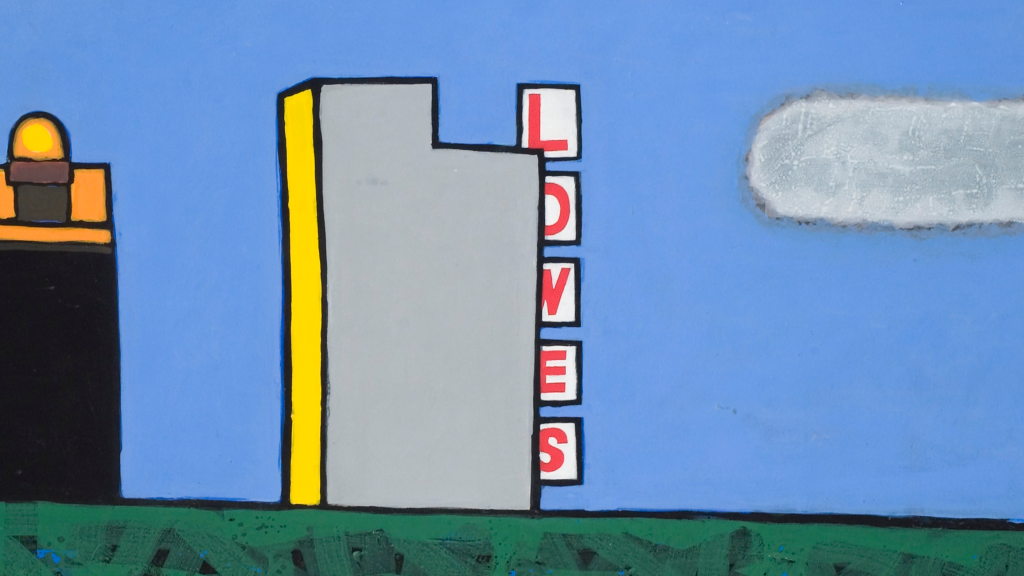
In his avowedly ‘selective’ view of Maitland from the riverbank, Peter Pinson (1943-2017) has created an abstract rendering of the natural and built forms of the city that simplifies them to their essence. Using acrylic paint, Pinson divides his composition into black-rimmed horizontals of river and bank, balanced by the vertical blocks of buildings. A […]
Read More…
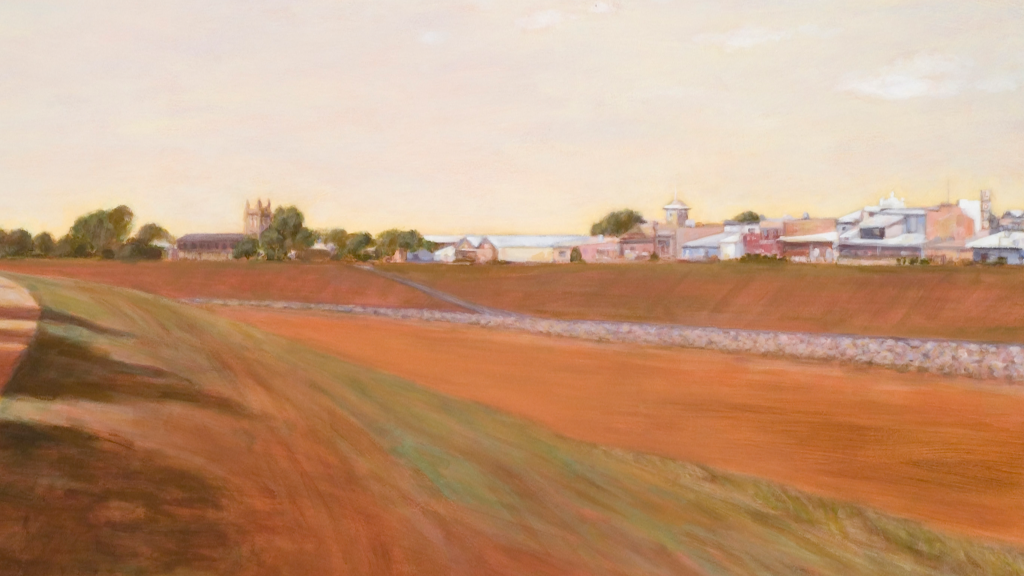
Claire Martin (1952-) has captured the curve of the levee bank as it rises above the Hunter River in Riverbank Path – Maitland (2006). The painting was commissioned for the exhibition View of Maitland from the riverbank (with apologies to Jan Vermeer and View of Delft) at Maitland Regional Art Gallery (MRAG) in 2006. Martin […]
Read More…
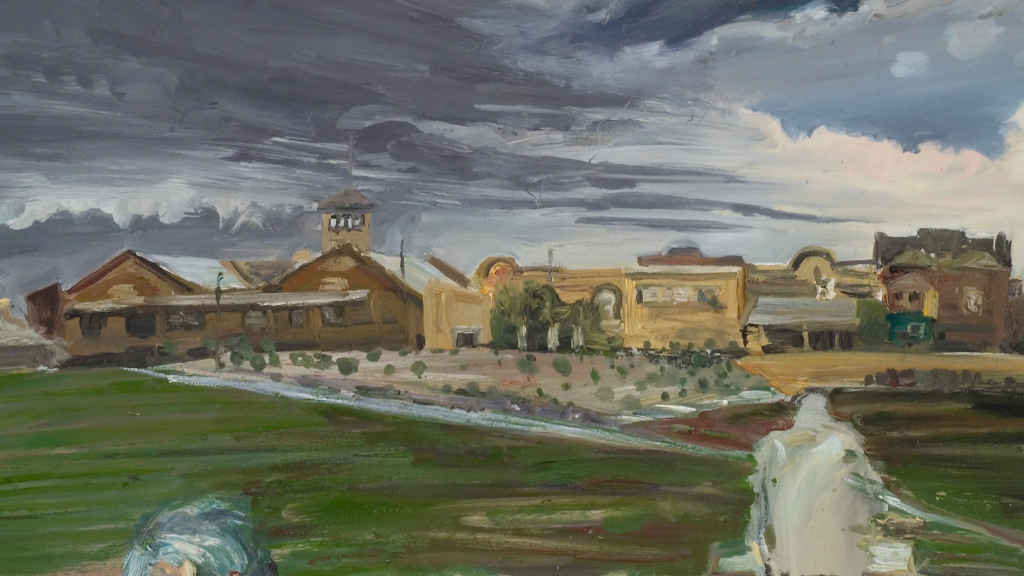
In his view across the Hunter River, Maitland – John and Leo (2006), Euan Macleod captures the energy of a gathering storm about to unleash its fury on two fellow artists painting the same view. Macleod paints the moment with an expressionistic spontaneity, using his palette knife and brush to capture the sky darkening over […]
Read More…
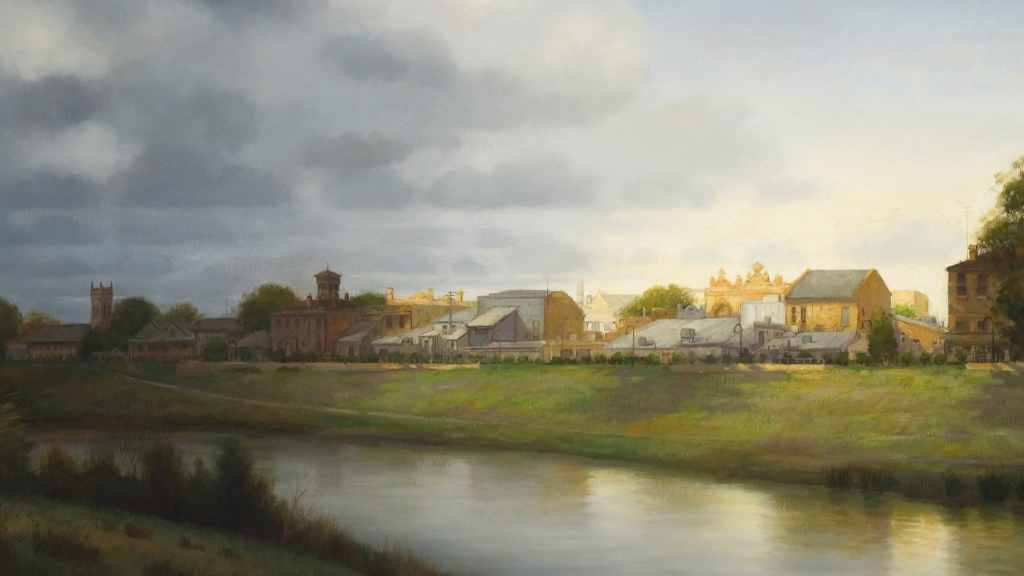
The influence of the Dutch Golden Age of painting is very clear in Alexander McKenzie’s (1971-) Cloud cover over Maitland, painted in 2006. Dutch artists of the seventeenth century conveyed pride in their flourishing cities in paintings such as View of Delft (1633) by Johannes Vermeer, which is the inspiration for this view by McKenzie. […]
Read More…
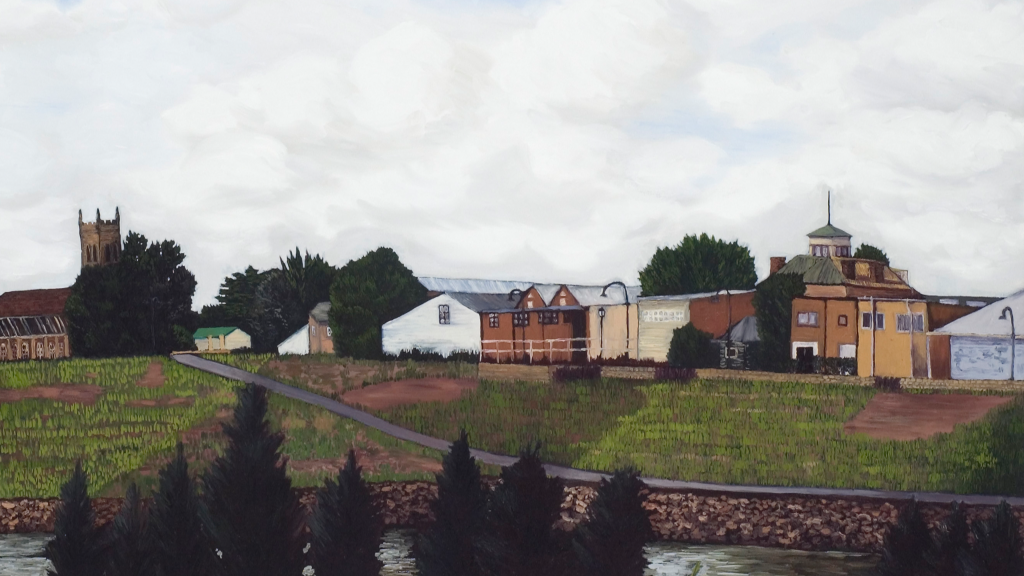
Emma Lohmann’s (1970-) A view of Maitland (after Vermeer) pays homage to Johannes Vermeer’s A view of Delft (1663), a masterpiece described by the nineteenth-century novelist Marcel Proust as ‘the most beautiful painting in the world’. Vermeer painted the waterborne entrance to the Dutch city of Delft, where visitors arrived at the city’s imposing gateway by […]
Read More…
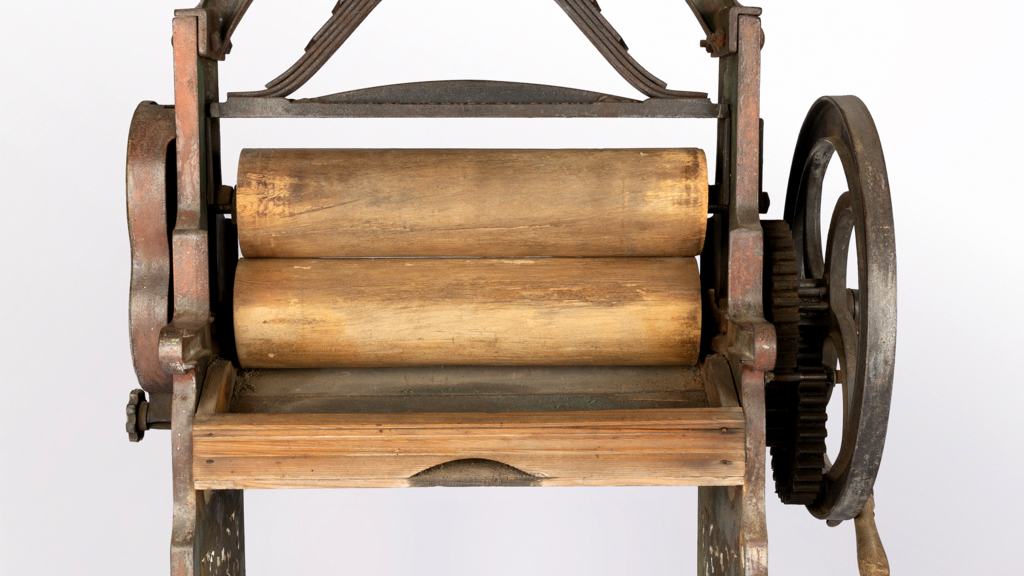
Like most pieces of iron machinery made in the nineteenth century, this ‘Ewbank Jewel’ laundry mangle was built to last. And last it did, now as solid and sturdy as the day it left the Entwhistle & Kenyon factory in Lancashire, England, sometime after 1875. Mangles were used to quickly flatten sheets, towels and tablecloths, […]
Read More…
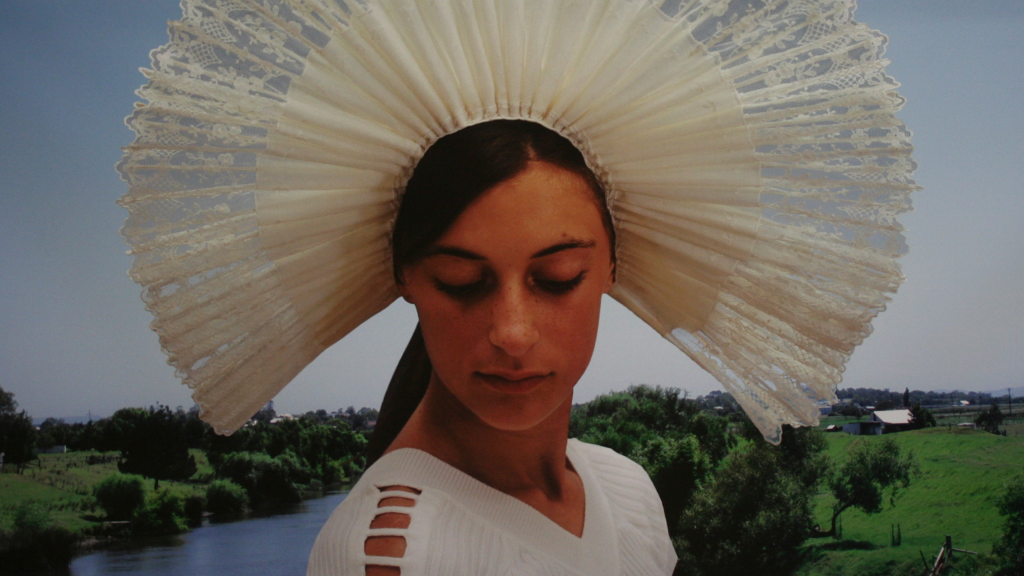
It was in 1995, during an artist’s residency at Hyde Park Barracks, that Anne Ferran (1949-) began to make art about Australia’s past: ‘You can live in a country all your life and feels like nothing happened before you got here.’ From this emerged a practice of unearthing forgotten or unspoken history and using it […]
Read More…
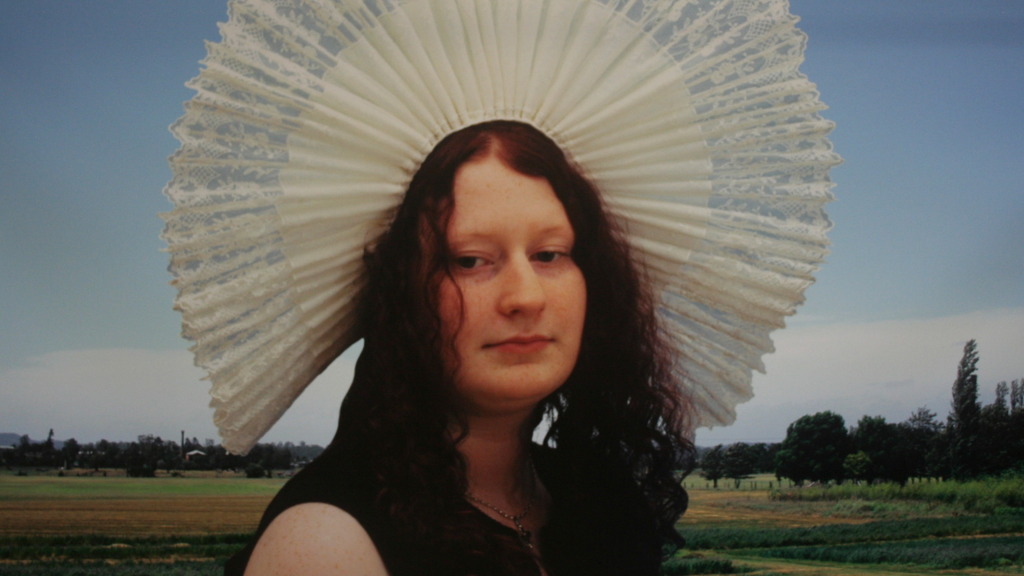
Amy Hill’s memory of being photographed is dulled by a haze of teenage angst. During the school holidays she had dyed her ginger hair to purple then back to what felt like a decidedly unnatural, rule-abiding maroon. During the term Amy’s art teacher approached the class to ask if they would be interested in being […]
Read More…
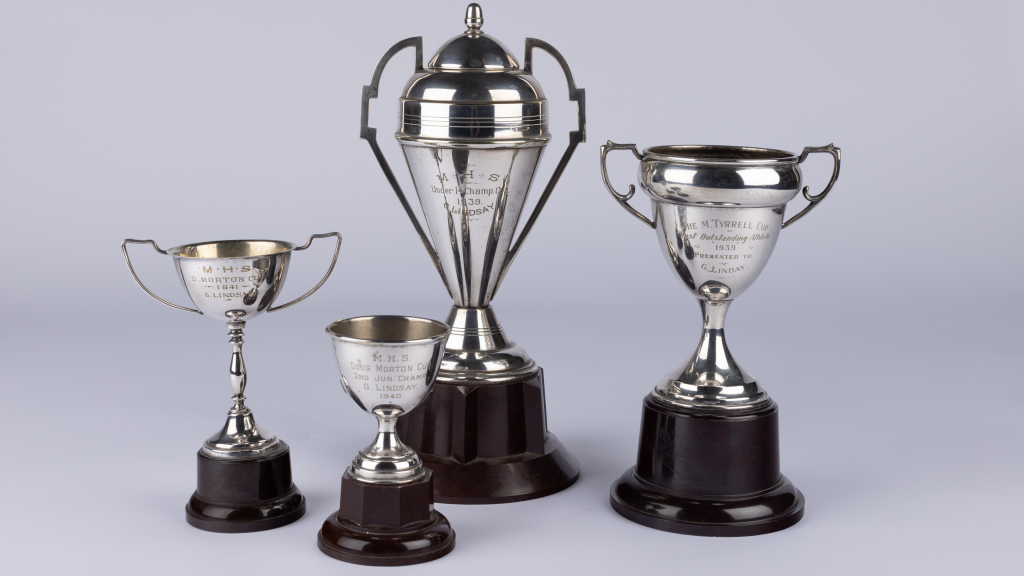
It was a proud moment for Gordon Lindsay when he was presented with this trophy for breaking his schools’ record for the under 14 ‘hop, step and jump’ (triple jump). It was 13 December 1939, and though it was a hot evening, every seat in the West Maitland Town Hall was filled for the annual […]
Read More…
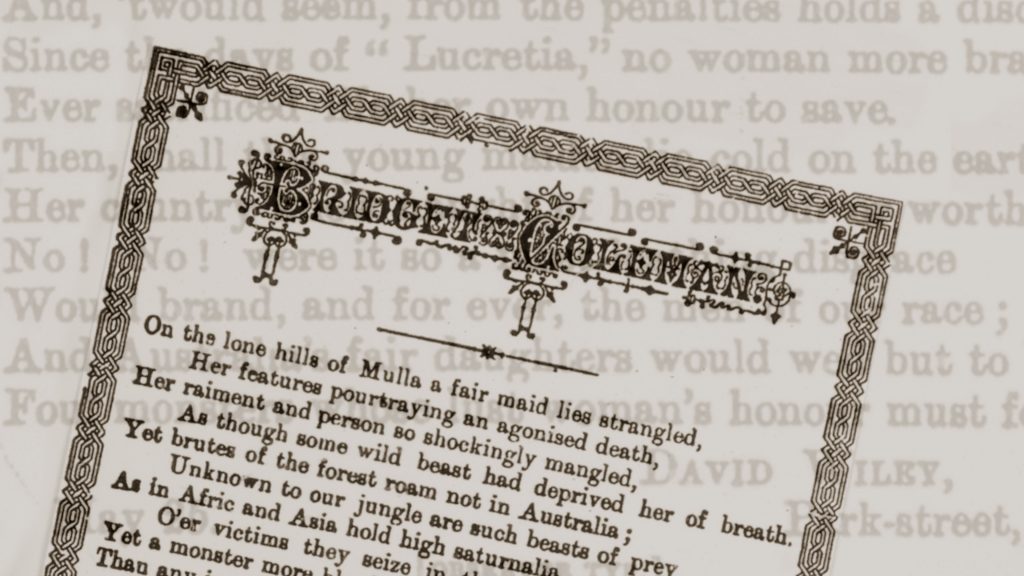
When a young shepherdess named Bridget Coleman (1856-1873) was murdered at Moonbi near Tamworth in 1873, David Wiley (1815-1876), a stranger to her, penned a poem about this crime. In the simply titled poem ‘Bridget Coleman’, Wiley expressed deep dissatisfaction that authorities did not find and bring to justice Bridget’s brutal killer. But why did […]
Read More…











